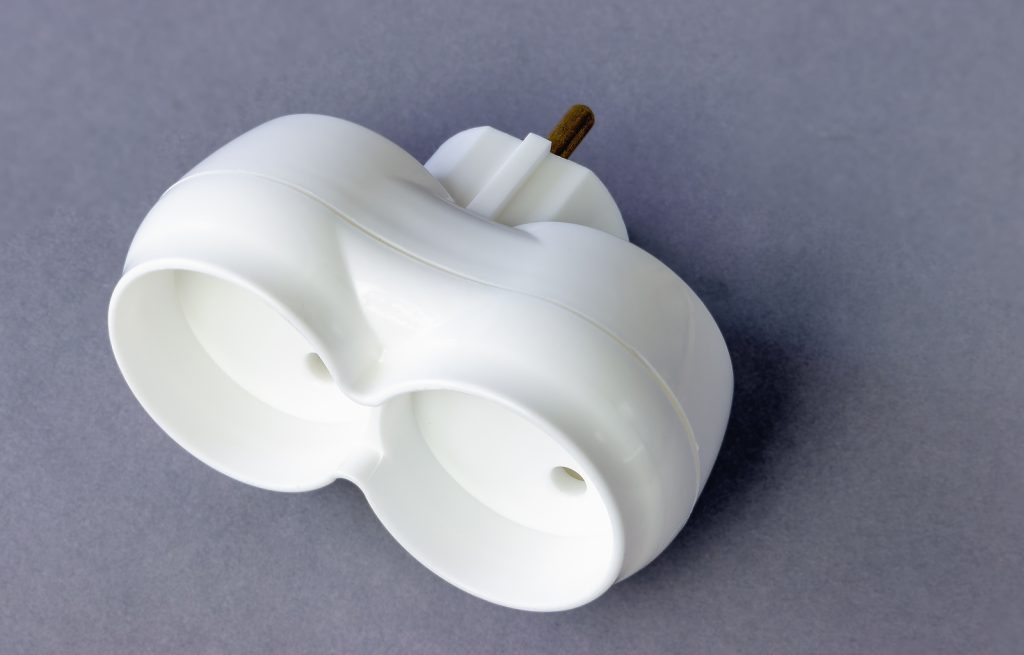If you live in an old house with two-prong outlets you may struggle to find space to plug in all of your devices, especially electronics with three-prong plugs. Luckily, it's relatively easy and inexpensive to have an electrician replace your two-prong outlets with three-prong outlets.

At Titan Plumbing And Electric, our electricians are experienced in replacing two-prong outlets with three-prong outlets. We'll make sure the job is done right, and that your home is up to code. Contact us today to schedule an appointment.
Here's a quick rundown of what you can expect when you hire an electrician to replace your two-prong outlets:
The Three-Prong Access vs. Affordable Solution Conundrum
Most homeowners generally do not want to rewire their homes. There are many reasons why this is so. While this is the safest option for updating your electrical system and creating three-prong access, it is also the most disruptive and expensive. In addition, it takes a significant amount of time. Luckily, your electrician has other more affordable solutions that will give you the same results. For instance, he may install ungrounded three-prong outlets although there are risks with this method.
Because two-prong outlets lack ground wire, there's a high risk of damage to your appliances and electrocution. When your electrician adds an outlet with an extra prong, he's able to add extra appliance access but unable to protect you and your family from potential harm, which grounding gives.
Should You Replace a Two-Prong With a Three-Prong Outlet Without Ground Wire?
When you change a two-prong outlet to an ungrounded three-prong GFCI (ground-fault circuit interrupter), you get protection from electric shock. But an ungrounded three-prong GFCI will not give your sensitive electronics the ground protection they need from voltage fluctuations.
Will a surge protector strip solve this issue? Sadly, no. Devices like surge protector strips are only as effective as the outlet you connect them to. No grounded outlet is equal to no surge protection. Although we understand that ungrounded three-prong outlets can provide a temporary solution to some property owners, we do not recommend them.
How Electricians Replace a Two-Prong Outlet With a Three-Prong GFCI
Here are the steps professional electricians take when replacing a two-prong outlet with a three-prong GFCI plug without connecting a ground wire to the electrical panel:
- Your electrician will first turn off the power to the outlet to be replaced at your service panel. He'll confirm this at your outlet using a voltmeter.
- He or she will then remove the cover plate screw and then the cover. Next to go are the two screws keeping the old receptacle in the box.
- Next, he'll pull out the old outlet without cracking the old wiring. It is extended gently to create access to the wires.
- The old outlet is then disconnected.
- Since some old boxes are tight, he'll test-fit the new GFCI by slightly moving the wires out of the way and making sure the new box fits. If it isn't a good fit, a bigger electrical box is then used.
- If the wires are too short, a 4-6" extension (pigtails) is added making sure to use the right wire for the circuit amperage: 15 amp = 14 gauge; 20 amp = 12 gauge. (If you're a DIYer with experience, you need to get one white wire and one black wire from your local hardware store, and the right wire nuts for the extensions).
- If the wires are the correct length, the electrician then identifies the "Line" terminals on the GFCI. These are the only wires he'll use. He connects the wires:
- Black wire to the brass Line terminal screw
- White wire to the silver Line terminal screw
- The wires are then folded into the box and the new outlet is pressed into place.
- The box is then screwed in to fasten.
- The outlet is then tested by pressing RESET to turn it on and thereafter TEST to turn it off. Finally, the cover plate is reattached and a NO GROUND sticker is placed on it.
How to Ground a Two-Prong Outlet
To keep your home safe, you'll have to ground your outlets. If your house is grounded but you have some outlets that are not, you need to get a licensed electrician to get the job done. This ensures that the adjustments are carried out accurately and safely.
To ground an outlet, you need to attach a wire and run it from your outlet to the grounding screw behind your electrical box. We should let you know that this process can be long-lasting and complicated for DIYers who have little or no experience.
Call The Licensed Electricians at Titan Plumbing And Electric
The best way to protect your home and devices is to upgrade your outlets to grounded three-prong outlets. This will give you and your family peace of mind knowing that everyone is safe from potential electrocution as well as power surges.
When you are ready to have your outlets replaced, or if you have any questions, please give Titan Plumbing And Electric a call at (813) 680-2075. We'll be happy to discuss your options and help you choose the best course of action for your home. We're always here to help, so please don't hesitate to reach out. We look forward to hearing from you soon!


